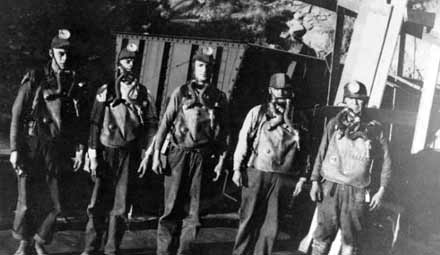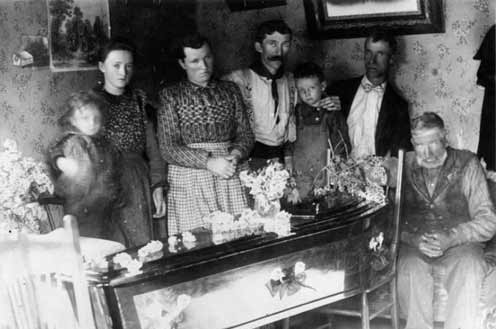On May 1, 1900, the Winter Quarters No. 4 coal mine exploded, killing 200 or more men and boys either by explosion or toxic fumes.
In short
Many of the miners had immigrated to Carbon County from Europe to work in the mines. Some of the men left behind wives and children, others left grieving parents or siblings. The miners’ families lost loved ones and breadwinners, and many widows would struggle to feed and clothe their children in the coming years.
More of the story
Coal mining was a dangerous business, and in the 19th century the government did not have safety regulations. The mining companies had few safety rules. But that began to change after several high-profile, high-casualty mine explosions near the beginning of the 20th century. People realized the need for better precautions and safe practices in the mines.

The Hills shook
On the morning of May 1, 1900, a gigantic explosion shook the hills around the Winters Quarters mines. The No. 4 mine had exploded, killing at least 200 workers.
The explosion threw miner John Wilson 820 feet out from the mine opening. Thomas Pugh, 15 years old, ran 1 ½ miles to reach the tunnel entrance and escape the danger, and fainted when he reached it. But his father, who was standing near him at the time of the explosion, had died. A few others who survived the initial explosion also escaped the mine like Thomas did.
The townspeople of nearby Scofield and Clear Creek rushed to the mine to try to save the miners. Rescue teams pulled a few miners out alive, but most of the men and boys inside the mine died. Some were killed by the explosion, others from breathing the toxic gases released by the explosion.
The disaster devastated hundreds of survivors. Abe Louma and his wife, who had come from Finland only three months before, lost seven sons and three grandsons in the explosion. The extended Hunter family lost 11 members.
The United States had never seen such a mining tragedy—it was the nation’s worst ever at the time.

Why did it happen?
Coal dust likely caused the explosion. The dust is very flammable and can explode, and the coal company did not take enough care to wet the dust down. When miners lit a dynamite charge, it ignited the coal dust in the air.
Aftermath
Volunteers washed and clothed bodies. 200 coffins arrived by train. Men came from Provo to help dig graves. Local communities and churches held funeral services for 200 lost to the mine.
The government never did help the families of the victims. But communities around Utah raised money and sent it to the widows. The families sued the mining company, which finally agreed to pay burial costs and give each widow $500.
After the Scofield Mine Disaster in 1900, mining companies began training first-aid squads in safety procedures. Strikers pushed for better safety measures and better pay. As time went on, both state and federal governments began regulating coal mines, and coal companies inched forward in providing more safety in the mines. But change was slow. Twenty-four years after the Scofield Mine Disaster of 1900, an explosion in the Castle Gate coal mine near Helper killed another 171 miners and one rescue worker. In fact, mining disasters in Utah between 1900 and 1984 claimed more than 450 lives.
Keep Exploring!
Return to the Immigration and Expansion page here.
Return to the I love Utah History home page here.